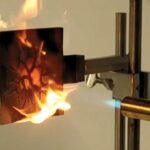Researchers from China have reportedly turned out a new type of stealth material that is far more advanced than anything out there today. Published in the Journal of Applied Physics, the technology behind it is called “active frequency selecting surface” (AFSS), and it is described as an ultra-thin multi-layered material that is only 7.8mm thick. The technical details of this material are impressive.
The first 7mm of the composite is a honeycomb substrate that supports the outer layers and separates them from the metal outer surface of the craft to which it is applied. Next comes a copper-and-semiconductor AFSS layer that runs 0.04mm thick, and this leads to an outer layer called FR4. FR4 is a material used in printed circuit boards which is able to variably tune itself to absorb a wide band of radio frequencies.
Due to its utility and physical properties, it is possible to use the material on many different types of craft, including drones, fighter jets, satellites, and more. It appears that this technology will make its way over to Chinese jets and ships, making them harder to detect.
This new material is designed to defeat microwave radar at the UHF band level. With its thin profile, this type of material is applicable to fighter jets, defeating a practical limitation found in previous materials.
Stealth technology, and radar evasion in aircraft technology, have been part of a longstanding cat-and-mouse game between the major military powers extending over many years. From the earliest days of high altitude craft, to the ultra-sophisticated materials that are placed on craft today, the goal is to be invisible to the tools of detection. Stealth aircraft materials are designed to break up and change the normal way in which radar waves bounce of a craft’s surfaces. In time, radar detection equipment has become increasingly fine-tuned in order to counteract these stealth techniques. Today, detection technology uses ultra-high frequencies (UHF), which have enabled higher resolution than ever before.











